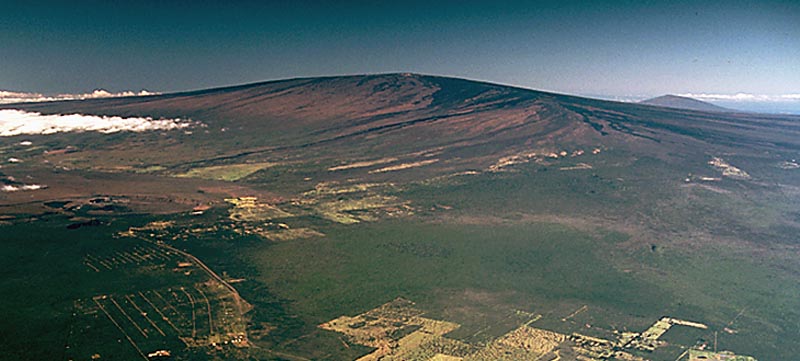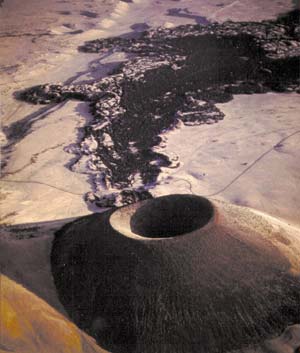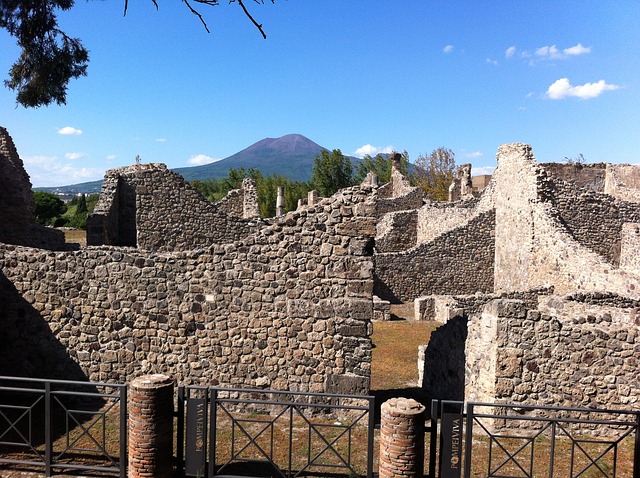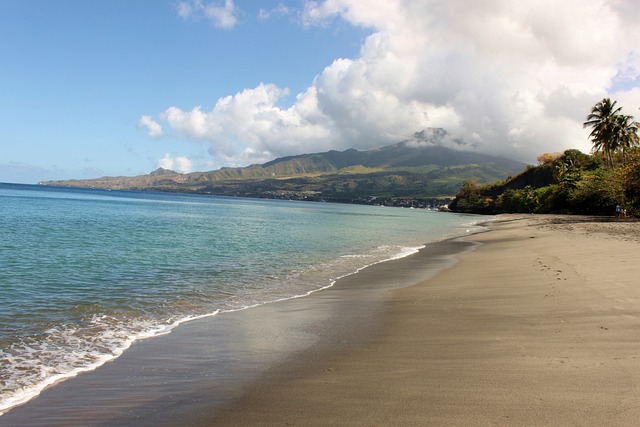A volcano is an opening in a planet’s crust through which hot lava, tephra, and gases come out from a magma reservoir. Magma refers to the molten or semi-molten rocks inside a planet’s surface. There are 3 types of volcanoes classified based on activity.
- Active
- Dormant
- Extinct
- Active volcanoes are those which erupt frequently.
- Dormant volcanoes are those which show signs of a future eruption.
- Extinct volcanoes are those which show no signs of eruption.
Types of Volcanoes classified on the basis of extrusive landforms
Stratovolcanoes (composite volcanoes)
These are the most common types of volcanoes. Stratovolcanoes have an almost conical shape e.g., Mount Fuji, and Mount Vesuvius. These cones are built up by several eruptions of volcanic materials from the main conduit. Each eruption adds a new layer to the sides of the volcano.
The lava that comes out of these volcanoes is acidic having a very high viscosity and a high silica content.

The lava doesn’t spread out far because of the high viscosity and a conical landform is formed around the conduit. These volcanoes may have various dykes feeding other vents on the sides of the volcano.
Stratovolcano eruptions are often explosive. A large amount of gas and pyroclastic material is thrown up into the atmosphere.
Shield volcanoes
The less viscous lava forms the shield volcanoes. The less viscous basic lava flows easily and forms a shield-like landform. The eruptions are generally non-explosive (effusive eruptions). The basic lava that flows out of the shield volcanoes has a low silica percentage.

Quick question
Which is the highest active volcano in the world (above sea level)?
Cinder cones
These are simple volcanoes having a single vent. Cinder cone hills have steep slopes and there is a bowl-shaped crater at the top. Pyroclastic materials such as volcanic ash and cinder are thrown up in the air during the eruption of the lava fountain. The pyroclastic material cools and settles down to form loose conical hills. The highly viscous molten lava flows beneath the cinder cones. These volcanoes roughly reach a height of 1000 ft.

Lava domes
These are formed by the very viscous lava. Due to its high viscosity, the lava does not flow easily and starts piling up to form lava domes.
Caldera
A caldera is a hollow formed when the magma reservoir is emptied and the ground above it collapses.
Now we know about the types of volcanoes. Let’s discuss some infamous volcanic eruptions.
Some infamous volcanic eruptions
The explosivity of volcanic eruptions varies indefinitely. Some eruptions cause minimal damage while others can affect global weather. The volcanic explosivity index (VEI) gives us the relative measure of the explosiveness of a volcanic eruption. It is a number ranging from 0-8. The greater the index, the greater the amount of tephra thrown out. Tephra refers to any solid material thrown out of the volcano.
Material coming out of the volcano is basically of three types – molten lava, tephra (solid rocks and ash), and gases. Lava flows closer to the surface and hence causes less damage than the tephra that travels far and causes widespread damage.
Mount Tambora eruption in 1815
Mount Tambora is an active stratovolcano in Sumbawa, Indonesia. The 1815 eruption of Mount Tambora is the deadliest volcanic eruption in recorded history. The volcanic explosivity index was 7 for the eruption.
Volcanic ash covered many parts of Indonesia, and burnt crops creating food shortages. The volcanic eruption shot the volcanic clouds up in the stratosphere. The aerosols traveled across the world and decreased the average global temperatures. Temperatures dropped because the sunlight was reflected by the sulfur aerosols present in the clouds.
The city of Chennai (then Madras) on the eastern shore of India experienced temperatures below freezing which is unusual for a South Indian coastal city. Moreover, some say, it even snowed in Madras.
An estimated 90,000 people lost their lives because of the eruption.
Mount Vesuvius eruption of 79 AD
Mount Vesuvius is a stratovolcano located in the Gulf of Naples. It has an elevation of 1,281 meters. The eruption of Mount Vesuvius on 24 August 79 AD is one of the deadliest volcanic eruptions in recorded history. The eruption had a VEI of 5. The city of Pompeii southwest of Vesuvius and the city of Herculaneum west of Vesuvius were completely buried under volcanic ash. The explosive eruption shot the gases and other volcanic materials up in the stratosphere more than 30 kilometers.

The number of casualties is unknown but was estimated at several thousand. The city of Pompeii buried under volcanic ash was rediscovered in 1748. Most of the things in the city were found unharmed as they were preserved by volcanic ash.
The letters written by Pliny the Younger, a Roman author give an eyewitness account of the actual explosion.
Krakatoa 1883 eruption
Krakatoa is a volcanic island in the Sunda Strait between the Indonesian islands of Java and Sumatra. The 1883 explosion of Krakatoa claimed the lives of more than 36,000 people. Several towns were buried under the hot volcanic ash. The eruption was so loud that it was heard thousands of kilometers away in Perth, Australia.
Like the Mount Tambora eruption, it also decreased the average global temperatures. The VEI for the eruption was 6. The eruption triggered a Tsunami which did more damage than the explosion itself.
Mount Pelee explosion in 1902
Another infamous volcanic explosion took place in Martinique. Mount Pelee which is a stratovolcano erupted in 1902 completely obliterating the town of Saint-Pierre. 30,000 people lost their lives and there were only 2 survivors from Saint-Pierre.

Read more
Answer to the quick question
Ojos del Salado in the Andes is the highest active volcano in the world. It has an elevation of 6,893 m above sea level. It is a stratovolcano.